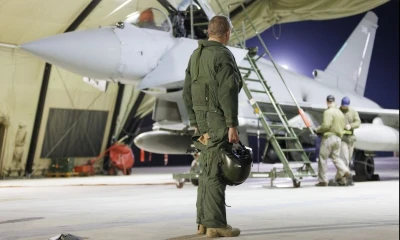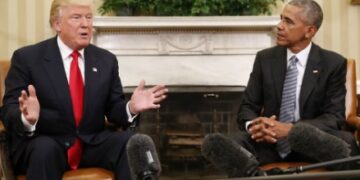Edited by Deepali Verma
Iran issued a warning to the U.S. over potential target of two cargo ships in the Mideast on February 4, which was long suspected to serve as forwarding operating bases for Iranian commandos, just after the launch of a massive airstrike campaign by America and the United Kingdom against Yemen’s Houthi rebels.
Iran’s statement on the Behshad and Saviz ships appeared to signal Tehran’s growing unease over the U.S. strikes in the past few days in Iraq, Syria and Yemen targeting militias backed by the Islamic Republic.
Those attacks were a retaliatory campaign responsible for the killing of three U.S. soldiers and wounding of dozens in Jordan, all stem back to Israel’s war on Hamas in the Gaza Strip, which has contributed to increasing tensions across the wider Middle East. It is further responsible for raising fears about a regional conflict breaking out.
The Yemen strikes conducted overnight on February 4 struck across six provinces of Yemen held by the Houthi rebels, including in Sanaa, the capital. The Houthis provided no assessment of the damage. However, the U.S. indicated that the rebels used the underground missile arsenals, launch sites and helicopters.
“These attacks don’t have the ability to discourage Yemeni forces. It cannot hold back the nation from keeping its support for Palestinians in the face of the Zionist occupation and crimes,” Houthi military spokesman Brig. Gen. Yahya Saree said. “The aggressors’ airstrikes will not be left unanswered.”
U.S. Defense Secretary Lloyd Austin issued a warning to the Houthis post the strikes that “they will have to bear the consequences if they don’t stop their illegal attacks on international shipping and naval vessels.” This message was repeated by British Foreign Secretary David Cameron, who said, “The Houthi attacks must stop.”
Biden’s national security adviser, Jake Sullivan, also warned the strikes may continue.
“We are prepared to face anything that any group or any country tries to come at us with,” Sullivan told CBS’ “Face the Nation.” “And the president is clear that we will continue to respond to threats that American forces face as we move forward.”
The Behshad along with Saviz are registered as commercial cargo ships with a Tehran-based company. The U.S Treasury has sanctioned it as a front for the state-run Islamic Republic of Iran Shipping Lines. The Saviz, prior to the Behshad, had loitered for years in the Red Sea off Yemen. It is suspected of serving as spy positions for Iran’s paramilitary Revolutionary Guard.
Saudi Arabia in 2017 had described the Saviz as a maritime base and weapons transshipment point for the Guard, that is staffed by men in military fatigues. Footage aired by Saudi-owned television channels showcased the vessel armed with what appears to be a covered machine gun bolted to the ship’s deck.
Iran’s regular army released a video statement on February 4 where their narrator for the first time describes the vessels as “floating armouries.” The narrator informed the Behshad as aiding an Iranian mission to “counteract piracy in the Red Sea and the Gulf of Aden”. But, Iran is not known publicly to have taken part in any of the recent campaigns against the rising Somali piracy in the region off the back of the Houthi attacks.
Prior to the fresh campaign of U.S. airstrikes began, the Behshad travelled south into the Gulf of Aden. It’s now docked in Djibouti in East Africa just off the coast from a Chinese military base in the country.

















